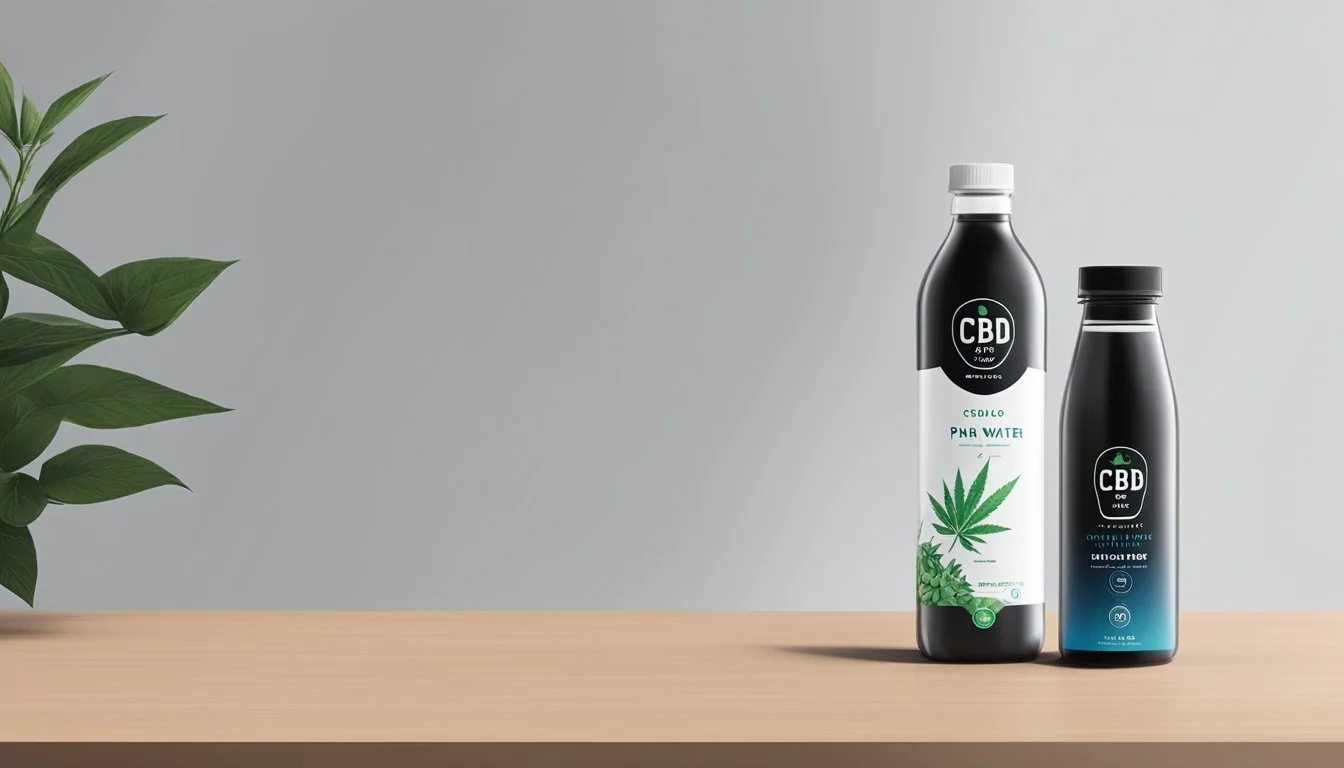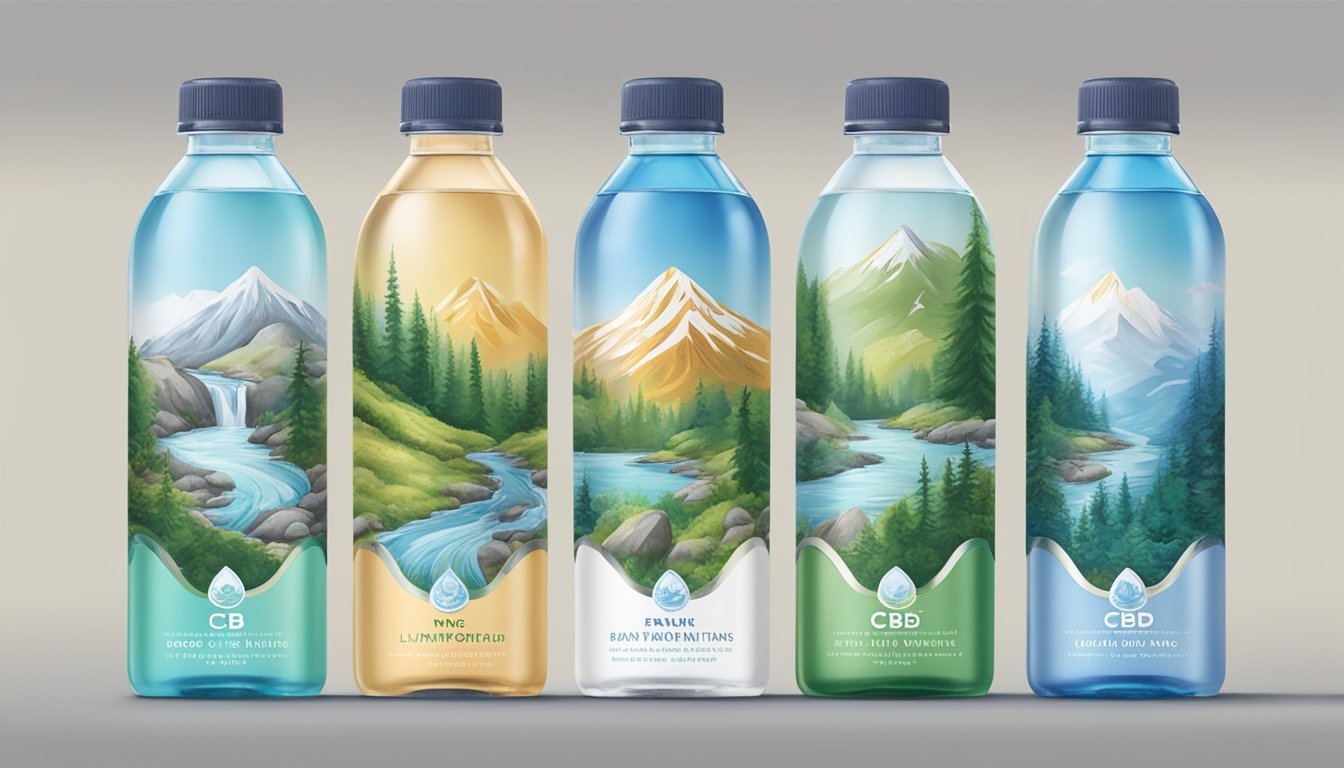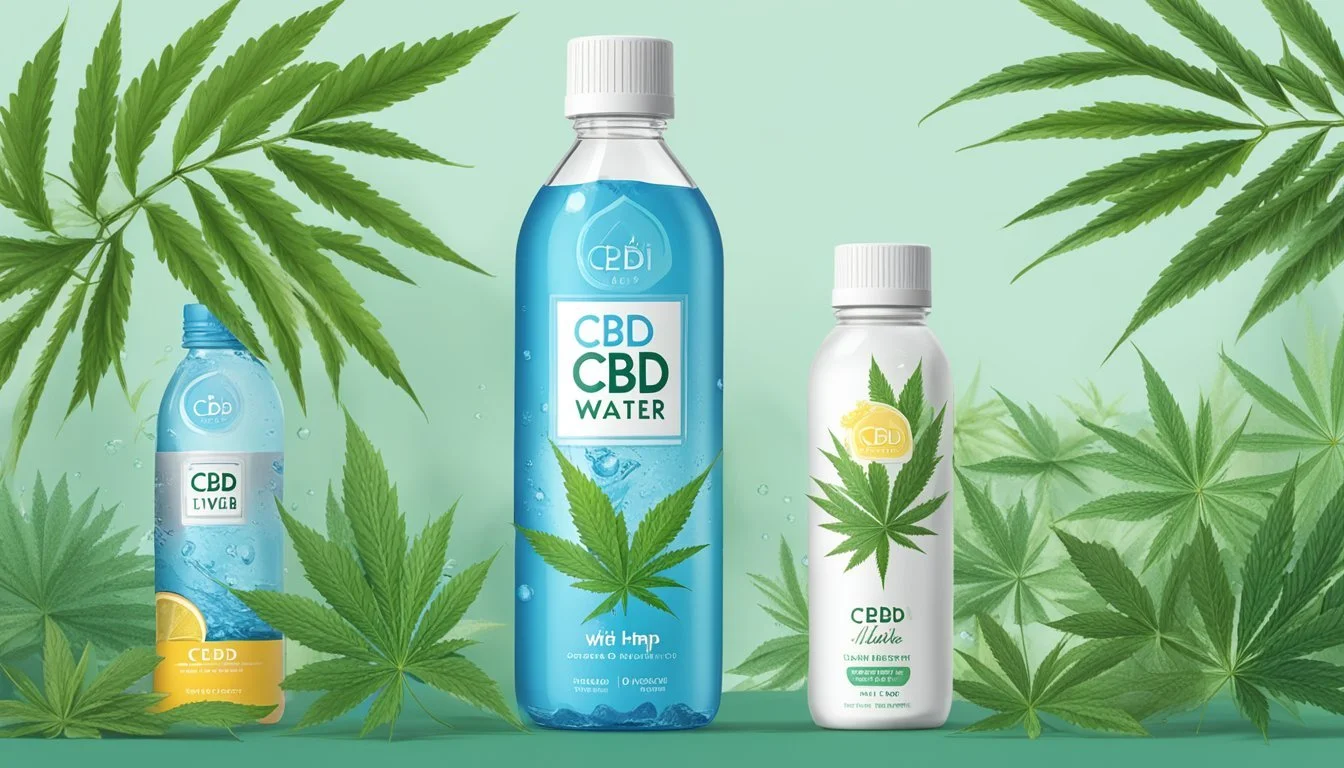Path vs. CBD Living
A Comparative Analysis of Bottled Water Quality
Choosing the right bottled water can be a challenge, especially when it comes to specialty options like those infused with CBD. Consumers today are increasingly exploring the benefits of CBD, and two popular choices in the market are Path and CBD Living. For those seeking maximum hydration combined with the potential benefits of CBD, CBD Living stands out due to its infusion of 10 mg of organic CBD per bottle.
Path offers a more traditional approach to bottled water, catering to those who prioritize purity and taste without additional ingredients. While it is an excellent option for everyday hydration, it does not provide the added benefits associated with CBD.
In comparison, CBD Living not only provides hydration but also incorporates the potential wellness benefits of CBD, appealing to those looking for an extra boost in their daily routine. This makes CBD Living a compelling choice for individuals who want more out of their bottled water.
Understanding Water Basics
When choosing bottled water, it's essential to consider factors such as pH levels and the source of the water, whether purified or spring. These elements can greatly affect the quality, taste, and potential health benefits of the water you consume.
The Importance of pH in Bottled Water
The pH level of water dictates its acidity or alkalinity, ranging from 0 to 14, with 7 being neutral. Bottled water with a higher pH, such as alkaline water, may offer benefits like reducing acidity in the body and improving hydration. For instance, CBD Living Water is noted for its alkaline pH of 9+, which can aid in decreasing body inflammation.
On the other hand, low pH levels can make water more acidic, potentially leading to tooth enamel erosion and digestive discomfort. Thus, paying attention to pH levels on bottled water labels is crucial for making an informed choice.
Purified vs. Spring Water: Understanding the Source
Purified water undergoes processes such as distillation or reverse osmosis to remove impurities and contaminants. This type of water is often sourced from municipal supplies and is highly filtered to ensure purity. Brands like CBD Living utilize advanced purification methods to create clean and safe drinking water.
Spring water, however, is collected from natural springs and is typically rich in minerals. Its taste and composition vary based on the geographic origin and surrounding environment. Consumers might prefer spring water for its natural mineral content and flavor profile. When evaluating bottled water options, recognizing these differences helps in selecting the water that best meets individual preferences and health needs.
Overview of Path Water
Path Water focuses on providing premium bottled water while prioritizing sustainability and environmental responsibility. They offer both still and sparkling water options.
Path's Approach to Bottling Water
Path's bottled water is designed to emphasize quality and reusability. The brand uses aluminum bottles instead of traditional plastic, reducing the waste typically associated with single-use plastics. Their still and sparkling water options offer clean and refreshing hydration. Each bottle is crafted to be durable and refillable, promoting a reduce, reuse, recycle approach among consumers.
Key Features:
Aluminum Bottles: Reusable, recyclable
Water Types: Still, sparkling
Focus: High-quality hydration, reusability
Sustainability and Environmental Impact
Path Water places a strong emphasis on reducing environmental impact. The use of aluminum bottles significantly cuts down plastic waste. Aluminum is highly recyclable, meaning that a Path Water bottle can be repurposed numerous times, which aligns with sustainability goals.
Moreover, the production process for Path Water is designed to minimize carbon footprint. The brand is committed to eco-friendly practices throughout their supply chain. This not only helps in lowering waste but also encourages consumers to make environmentally conscious choices.
Environmental Efforts:
Material: Recyclable aluminum
Production: Minimal carbon footprint
Consumer Message: Promote sustainable practices, reduce plastic waste
Insights into CBD Water
CBD water is crafted by infusing water with cannabidiol (CBD), a non-psychoactive compound found in cannabis. This makes CBD-infused beverages a popular choice among those seeking potential therapeutic benefits without the high associated with THC.
One key feature of CBD water is the use of nanotechnology. This process breaks down CBD molecules into tiny particles, enhancing the bioavailability of CBD, meaning it is more readily absorbed by the body.
CBD Living is a prominent brand, known for its consistent quality. Their water is priced at around $3.99 per bottle, reflecting the advanced technology involved.
Consumers can choose from a variety of flavors and formulations depending on their preferences. Some brands, like Mountjoy Sparkling, offer options such as Lemon Lime, Peach, and Orange.
Despite its benefits, CBD water is one of the more expensive CBD-infused beverages on the market. A single serving can range between $4-7 USD, not including additional costs like tax and shipping.
For those monitoring their intake, knowing that most CBD drinks contain around 10-20 milligrams of CBD per serving can help in making an informed choice. Each product should have clear COAs (Certificates of Analysis) available for verification.
In summary, CBD water offers convenience and quick absorption, making it a notable option in the growing market of CBD drinks.
Comparing CBD Living and Path Water
CBD Living and Path Water both offer unique benefits that cater to different consumer preferences. CBD Living focuses on the infusion of CBD for wellness benefits, while Path Water emphasizes sustainability with reusable bottles.
Taste and Flavor Profiles
CBD Living Water is known for its lack of herbal taste, making it more palatable for those who don’t enjoy strong flavors. The product boasts a clean, neutral taste similar to regular bottled water, which can appeal to a broad audience. The absence of an herbal aftertaste is often highlighted as a key selling point for CBD Living.
Path Water, on the other hand, doesn’t include additives like CBD, ensuring a pure water taste. This makes Path Water ideal for those who prioritize simplicity and are sensitive to any alterations in flavor. Path Water emphasizes the natural taste of the water, aiming to deliver a refreshing experience without any added components.
Health and Wellness Benefits
CBD Living Water offers the added benefit of 10 mg of nano-CBD per bottle. This can potentially aid in reducing inflammation and improving overall wellness. The product is also alkaline, with a 9+ pH, which can help to counteract body acidity. The use of nano-technology is aimed at enhancing the bioavailability of CBD, ensuring quicker and more effective absorption.
Path Water focuses on environmental health by providing a reusable aluminum bottle, which can significantly reduce plastic waste. While it doesn't offer wellness benefits through additives like CBD, it contributes to broader health goals by promoting sustainability. This can be particularly important for consumers looking to make a positive impact on the environment while staying hydrated.
Consumer Experience with CBD Water
Customers appreciate the convenience of CBD water as an easy method to incorporate CBD into their daily routine. CBD Living Water is praised for its BPA & BPS-free bottles and alkaline pH that promotes reduced acidity. The 10 mg of nano-CBD per bottle is highlighted for its potential anti-inflammatory benefits.
Path Water offers a different experience. Known for its eco-friendly aluminum bottles, Path appeals to environmentally-conscious consumers. Though not infused with CBD, Path emphasizes purity and sustainability. This contrast in product focus makes consumer choice heavily dependent on individual priorities.
Many users find CBD Living Water refreshing with no noticeable hemp taste, which enhances its appeal. The alkaline nature has reportedly made some users feel more balanced. However, the cost around $3.99 per bottle makes it a luxury for regular consumption.
There’s also the introduction of Mountjoy Sparkling CBD Water, offering a no-calories, no-carbs option in various flavors. Consumers appreciate the 10 mg organic CBD content and the sparkling refreshment of flavors like Lemon Lime and Peach.
Prospective buyers should consider their main motives. If looking for CBD benefits and alkaline properties, CBD Living Water stands out. For environmental sustainability and purity without CBD, Path Water remains an excellent choice.
More About Path
Mountain Valley Spring Water vs Path: Which Bottled Water is Better?
Path vs Whole Foods Italian Still Mineral water: Which Bottled Water is Better?
More About CBD Living
Aqua Carpatica vs CBD Living: Which Bottled Water is Better?
Cascade Mountain vs CBD Living: Which Bottled Water is Better?
Core Hydration vs CBD Living: Which Bottled Water is Better?
Crystal Geyser vs CBD Living: Which Bottled Water is Better?
Hawaii Volcanic vs CBD Living: Which Bottled Water is Better?
Hawaiian Springs vs CBD Living: Which Bottled Water is Better?
Icelandic Glacial vs CBD Living: Which Bottled Water is Better?
Kirkland Signature vs CBD Living: Which Bottled Water is Better?
Mountain Valley Spring Water vs CBD Living: Which Bottled Water is Better?
Nestle Pure Life vs CBD Living: Which Bottled Water is Better?
Richard's Rainwater vs CBD Living: Which Bottled Water is Better?
San Pellegrino vs CBD Living: Which Bottled Water is Better?
Solan de Cabras vs CBD Living: Which Bottled Water is Better?
Talking Rain AQA vs CBD Living: Which Bottled Water is Better?
Whole Foods 365 vs CBD Living: Which Bottled Water is Better?
Whole Foods Italian Still Mineral water vs CBD Living: Which Bottled Water is Better?




